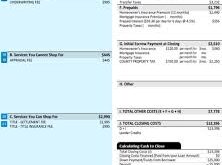Mortgage Refinance Rates: Guide to Saving on Your Home Loan. Refinancing a mortgage is a strategic financial move that can help homeowners lower their monthly payments, secure a better interest rate, or tap into their home equity. However, understanding mortgage refinance rates is essential to maximizing savings and avoiding costly mistakes. In this comprehensive guide, we will explore everything you need to know about mortgage refinance rates, how they work, factors affecting them, and how to get the best deal.
What Are Mortgage Refinance Rates?
Mortgage refinance rates are the interest rates lenders offer when a homeowner refinances their existing mortgage. These rates vary based on market conditions, lender policies, and individual borrower qualifications.
How Refinance Rates Differ from Purchase Mortgage Rates
While purchase mortgage rates apply to new home loans, refinance rates apply to replacing an existing mortgage with a new one. Refinancing rates may be slightly different due to lender risk assessments and prevailing market trends.
Factors That Influence Mortgage Refinance Rates
Several factors determine the refinance rates offered by lenders. Understanding these can help borrowers make informed decisions.
- Credit Score – A higher credit score can result in lower interest rates.
- Loan-to-Value (LTV) Ratio – The amount of equity in your home impacts your eligibility for lower rates.
- Debt-to-Income (DTI) Ratio – Lenders evaluate your overall debt compared to your income.
- Market Conditions – Economic trends, inflation, and Federal Reserve policies influence interest rates.
- Loan Term – Shorter-term loans often have lower interest rates than longer-term loans.
- Type of Loan – Fixed-rate and adjustable-rate mortgages (ARMs) have different rate structures.
- Lender Policies – Each lender sets its own refinance rates based on risk assessments and competitive strategies.
- Home Equity – More equity generally qualifies borrowers for better rates.
Types of Mortgage Refinance Options
1. Rate-and-Term Refinance
This option allows homeowners to change their interest rate and/or loan term without increasing the loan amount.
2. Cash-Out Refinance
Homeowners can refinance for a higher loan amount and withdraw the difference in cash, often used for home improvements or debt consolidation.
3. Cash-In Refinance
Borrowers pay down a portion of their loan balance to achieve better rates and lower payments.
4. FHA Streamline Refinance
A simplified refinance process for homeowners with existing FHA loans, requiring minimal documentation.
5. VA Refinance (IRRRL)
For veterans and active-duty service members, the VA Interest Rate Reduction Refinance Loan (IRRRL) offers a streamlined process with competitive rates.
How to Get the Best Mortgage Refinance Rates
- Improve Your Credit Score – Pay off debts, reduce credit utilization, and ensure timely bill payments.
- Shop Around for Lenders – Compare multiple lenders to find the best rates and terms.
- Lower Your Debt-to-Income Ratio – Increase income or reduce debts to improve eligibility.
- Increase Home Equity – A lower LTV ratio can help you qualify for better rates.
- Consider a Shorter Loan Term – A 15-year refinance may have a lower rate than a 30-year loan.
- Monitor Market Trends – Refinance when rates are historically low.
- Negotiate Closing Costs – Some lenders may offer to reduce fees or provide credits.
- Lock in Your Rate – Once you find a favorable rate, lock it in to protect against future rate hikes.
10 Tips for Refinancing Your Mortgage
- Check your credit report for errors before applying.
- Calculate your break-even point to determine if refinancing makes financial sense.
- Avoid extending your loan term unless necessary.
- Consider refinancing with your current lender for loyalty discounts.
- Factor in all costs, including closing fees and appraisal expenses.
- Ensure your home’s value is accurately assessed to avoid surprises.
- Avoid unnecessary cash-out refinancing unless you need liquidity.
- Get multiple quotes from different lenders to compare offers.
- Consider working with a mortgage broker to explore more options.
- Read all loan terms carefully before signing to avoid hidden fees.
10 FAQs About Mortgage Refinance Rates
1. What is a good mortgage refinance rate?
A good rate depends on market conditions and your financial profile. Typically, rates below 5% are considered competitive.
2. When is the best time to refinance?
The best time is when rates are low, your credit is strong, and you plan to stay in your home long enough to recover closing costs.
3. Can I refinance with bad credit?
Yes, but you may face higher interest rates or need to apply for government-backed options like FHA refinance loans.
4. Does refinancing hurt my credit score?
A refinance can cause a temporary dip in your credit score due to hard inquiries and changes in loan terms.
5. Are there any hidden costs when refinancing?
Closing costs, appraisal fees, and lender fees can add up, so always review loan disclosures carefully.
6. How long does refinancing take?
The process typically takes 30-45 days, depending on lender requirements and documentation.
7. Can I refinance multiple times?
Yes, but consider closing costs and potential savings before refinancing again.
8. What’s the difference between fixed and adjustable refinance rates?
Fixed rates remain stable over time, while adjustable rates can fluctuate based on market conditions.
9. Can I refinance if I’m underwater on my mortgage?
Certain programs, like HARP or FHA Streamline, may help homeowners refinance even with negative equity.
10. Do I need an appraisal to refinance?
Some lenders may require a new appraisal, while others offer appraisal waivers for qualified borrowers.
Conclusion
Mortgage refinance rates play a crucial role in determining whether refinancing your home loan is a smart financial move. By understanding the factors that influence these rates and following strategic steps to secure the best deal, homeowners can save thousands of dollars over time.
Before making a decision, assess your financial situation, shop around for lenders, and calculate potential savings. With the right approach, refinancing can be a powerful tool for reducing monthly payments, shortening loan terms, or accessing home equity.
 mortgage.kbk.news
mortgage.kbk.news
